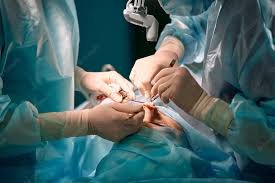
What Is Plastic Surgery?
Just because the name includes the word “plastic” doesn’t mean patients who have this surgery end up with a face full of fake stuff. The name isn’t taken from the synthetic substance but from the Greek word plastikos, which means to form or mold (and which gives the material plastic its name as well).
Plastic surgery is a special type of surgery that can change a person’s appearance and ability to function.
- Reconstructive procedures correct defects on the face or body. These include physical birth defects like cleft lips and palates and ear deformities, traumatic injuries like those from dog bites or burns, or the aftermath of disease treatments like rebuilding a woman’s breast after surgery for breast cancer.
- Cosmetic (also called aesthetic) procedures alter a part of the body that the person is not satisfied with. Common cosmetic procedures include making the breasts larger (augmentation mammoplasty) or smaller (reduction mammoplasty), reshaping the nose (rhinoplasty), and removing pockets of fat from specific spots on the body (liposuction). Some cosmetic procedures aren’t even surgical in the way that most people think of surgery — that is, cutting and stitching. For example, the use of special lasers to remove unwanted hair and sanding skin to improve severe scarring are two such treatments.
Is Plastic Surgery the Right Choice?
Reconstructive surgery helps repair significant defects or problems. But what about having cosmetic surgery just to change your appearance? Is it a good idea for teens? As with everything, there are right and wrong reasons to have surgery.
Cosmetic surgery is unlikely to change your life. Most board-certified plastic surgeons spend a lot of time interviewing teens who want plastic surgery to decide if they are good candidates for the surgery. Doctors want to know that teens are emotionally mature enough to handle the surgery and that they’re doing it for the right reasons.
Many plastic surgery procedures are just that — surgery. They involve anesthesia, wound healing, and other serious risks. Doctors who perform these procedures want to know that their patients are capable of understanding and handling the stress of surgery.
Some doctors won’t perform certain procedures (like rhinoplasty) on a teen until they are sure that person is old enough and has finished growing. For rhinoplasty, that means about 15 or 16 for girls and about a year older for guys.
Girls who want to enlarge their breasts for cosmetic reasons usually must be at least 18 because saline implants are only approved for women 18 and older. In some cases, though, such as when there’s a tremendous size difference between the breasts or one breast has failed to grow at all, a plastic surgeon may get involved earlier.
